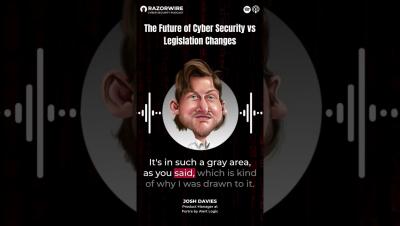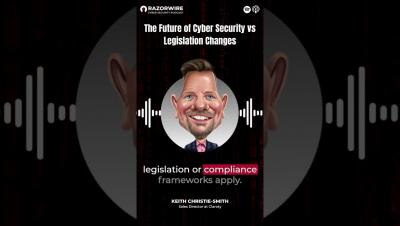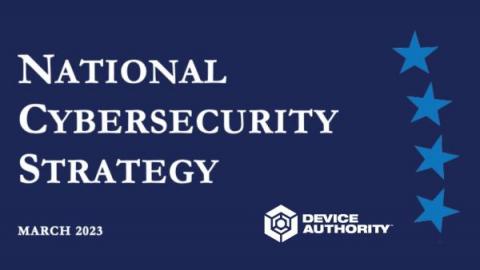Security | Threat Detection | Cyberattacks | DevSecOps | Compliance
March 2023
A Case for Cyber Resilience
Last month, The White House introduced a new National Cybersecurity Strategy for the first time since 2018. The landscape has changed rapidly over the past five years – a lifetime in cyber. Yet one thing remains constant, then and now: Cyberattacks are inevitable. Rubrik supports a whole of government approach to solve these existential challenges we face. In particular, efforts like this one, which is focused on resiliency, are likely to produce the greatest impact.
4 Things to Know About FISMA
Recently, we discussed the most effective cybersecurity frameworks to reduce the risk of cyber threats. One of the most important systems is the Federal Information Security Management Act (FISMA). This act applies to certain organizations, and is imperative to help protect them against data breaches. Let’s take a look at four things to know about FISMA, from what it is to how to monitor FISMA compliance.
CLM and Turkish KVKK Personal Data Protection Law
These New Smart Phone Regulations by the Government of India Can Save You From Cyber Frauds
India has recently announced plans to introduce new security testing for smartphones to improve the security of its citizens' personal information and prevent cyber threats from compromising sensitive data. The move comes in response to concerns about the increasing reliance on smartphones in India, which has made the country vulnerable to cyber-attacks and data breaches.
The Future of Cybersecurity Legislation: Prioritizing Resilience over Deterrence
Securing the digital future: Reviewing the Biden-Harris administration's National Cybersecurity Strategy
On March 2nd, 2023, the Biden-Harris Administration released a fact sheet announcing the National Cybersecurity Strategy, which outlines their vision for securing the nation's digital infrastructure and ensuring the safety of American citizens online. This strategy addresses the growing number of cyber threats facing the United States, including ransomware attacks, supply chain vulnerabilities, and state-sponsored hacking.
The Need for More Cybersecurity Legislation
2023 Cross-border Regulatory Changes You Need To Know
In 2023, an estimated five quintillion bytes of data will be created daily. While this data revolution is exciting, it also raises questions about data privacy. In response to that challenge, more regions, localities, and countries will implement additional data privacy laws in the coming years to ensure the safety of individuals’ data.
How CCPA Helps Protect Consumer Data
Strengthening Cyber Security: The Impact of Compliance and Legislation
The Need for a Universal Set of Information Security Regulations: Insights from Industry Experts
The 443 Episode 232 - US National Cybersecurity Strategy
White House Backs Automation of Device Security in Latest Cybersecurity Strategy Announcement.
The most recent White House announcement detailing the US National Cybersecurity Strategy puts forth some important priority objectives.
Will Biden's National Cybersecurity Strategy Trigger AppSec Change?
Every federal administration for the past 20 years has issued a cybersecurity strategy, so in one sense the National Cybersecurity Strategy issued by the Biden administration on March 2, 2023 is not unexpected. The big difference, however, lies in the recommendations: For the first time, the government is pressing for regulatory mandates on key industry sectors that control wide swathes of critical infrastructure nationwide.
Key Take-Aways from the National Cybersecurity Strategy
On March 1, 2023, the US White House released the long-awaited National Cybersecurity Strategy. As a product manager, I am often the voice of the customer, and our customer’s should be excited about this strategy. Throughout the strategy it is clear that the needs of the end users have been prioritized compared to other stakeholders. After reading this cover to cover, here are some nuggets of insight that our customers should be aware of.
Biden Administration Releases National Cybersecurity Strategy
President Joe Biden took the next step in the nation's ongoing effort to combat cyber threats by issuing the National Cybersecurity Strategy on March 2, which focuses on growing the public-private sector security partnership needed to protect critical infrastructure, dismantle threat groups, and increase resiliency.
Answering the Call: 3 Software Security Pillars Addressed by the National Cybersecurity Strategy
Staying ahead of the cyberattack curve in a constantly evolving world requires a comprehensive strategy. Today's release of the Biden-Harris Administration's National Cybersecurity Strategy provides an extensive roadmap for impacting both public and private security efforts. In this blog post, we’ll take an in-depth look at three of the most software-related strategic objectives: software liability, open-source software usage, and cybersecurity workforce readiness.
How to Comply with Australia's CIRMP Rules
The Australian Cyber and Infrastructure Security Centre (CISC) recently announced that the Critical Infrastructure Risk Management Program (CIRMP) obligation had entered into effect. The Minister for Home Affairs, the Hon Clare O’Neil, signed the CIRMP Rules as the final part (Section 61) of the Security of Critical Infrastructure Act 2018 (SOCI Act) on 17 February 2023, effective immediately.





















